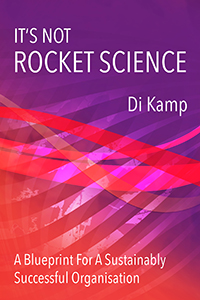I have read many books on improving your life. They range from the ‘quick-fix’ Western-style self-help books to the great philosophical and spiritual masters, and there is no doubt that I have learnt from their words of wisdom, and been reminded again and again of techniques and mind-sets that help us to find well-being.
Yet examples of people living in their well-being seem few and far between in our culture. And then I spend ten days in India, and I experience hundreds of examples: the ‘room-boy’ at our hotel, the shop-keeper selling sacks, the priest in the temple, the woman sitting at her stall of fruit, the man who made the naan bread in the street restaurant – everywhere I looked, I could see people with a ready smile, a sense of purpose, and an ability to appreciate the small daily pleasures of being alive.
What have we lost? And how can we regain it? It is clearly not linked to wealth or status, but to a mindset that filters for the reasons to celebrate being alive.
It seems to me that we have learnt too well how to forget what really matters in life. As human beings, we need to feed our bodies, our minds and our spirits on a daily basis, in order to feel whole, and have a sense of well-being. Yet often we are too busy to do this.
We may stuff our bodies with food, but do we eat well, do we care for our bodies? We may stuff our minds with thoughts, but do they nurture and expand our minds, or just cause them to contract with fears and anxieties? And how often do we even consider feeding our spirit?
This weekend you could take the opportunity to stop and consider how you can enhance your well-being.
- 1. Feeding our bodies
We have become used to eating too much. How about having one day where you only eat fresh food, freshly prepared, that you really fancy. And on that day, treat your body well – a massage, a gentle walk, a long bath – something to care for your body.
- 2. Feeding the mind
Most of us have a good book that we haven’t got round to reading. It may be an inspirational one, or just a really good story – and if you don’t have any, look at some of our reviews for ideas! Give yourself a couple of afternoons to sit cosy and warm, with a good book – or if you aren’t a reader, choose a ‘feel-good’ movie instead!
- 3. Feeding the spirit
Our world is full of simple ways of feeding our spirits. We know our spirit is being fed when we can’t help but smile, when we feel that warm glow of pleasure. Nature is a rich source of spirit food: the delight of a crisp winter’s day, the sound of a river or stream. Or really take the time to watch your children’s excitement at something new, or just smile at strangers in the street, and see how many smile back!
We may all lead busy lives, but we need to remember to live each day, not just get through it. There is always time to give a little food to our bodies, our minds and our spirits.
Maybe then we will be closer to well-being.



